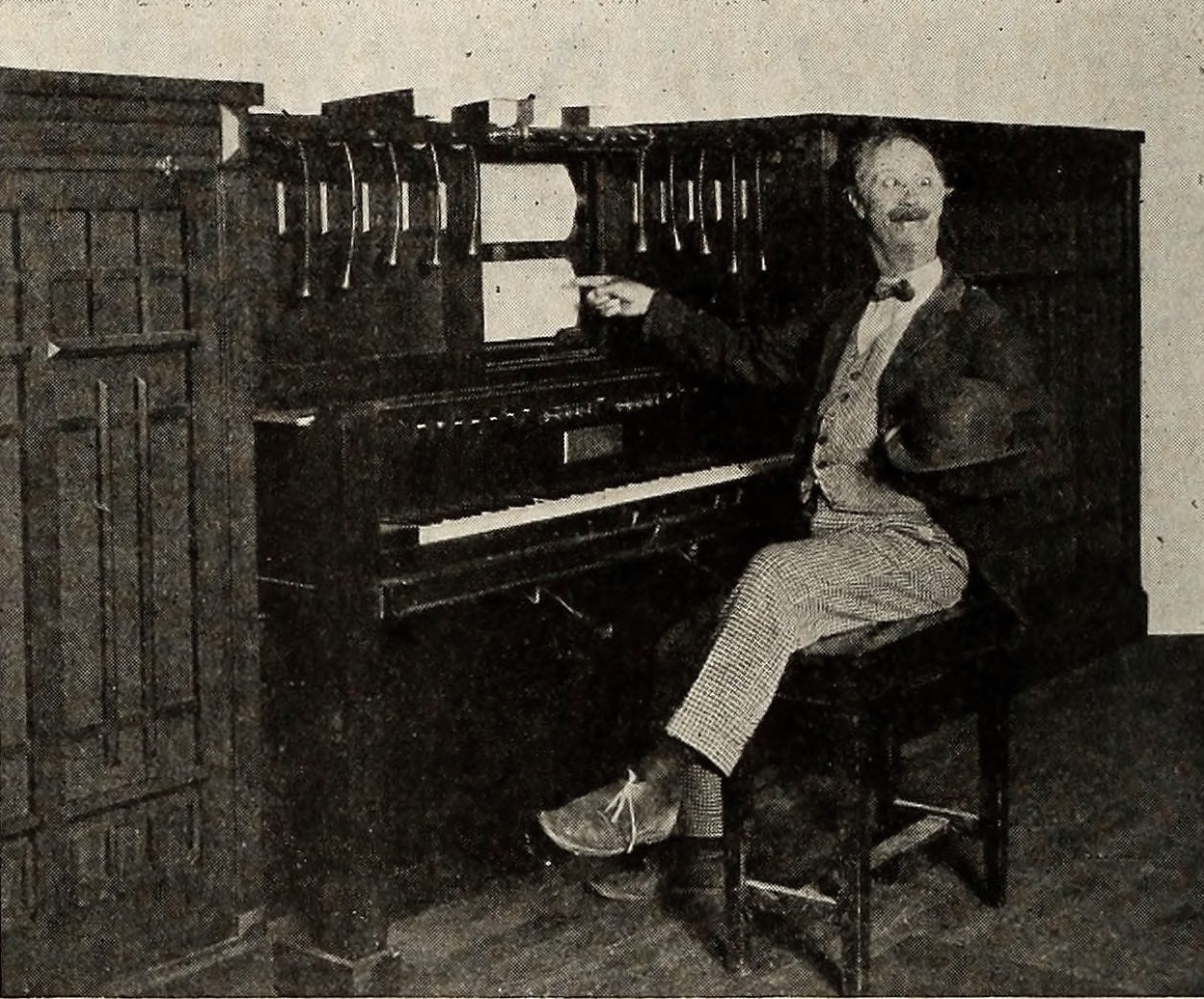Photoplayer on:
[Wikipedia]
[Google]
[Amazon]
 The photoplayer is an automatic mechanical orchestra used by movie theatres to produce photoplay music to accompany
The photoplayer is an automatic mechanical orchestra used by movie theatres to produce photoplay music to accompany
Glenwood Vaudeville Revue Wurlitzer
Joe Rinaudo playing the American Fotoplayer on "California's Gold with Huell Howser"
Silent Cinema Society - American Fotoplayer
American Treasure Tour Museum - Seeburg "R" Fhotoplayer
{{Mechanical instruments Silent film music Film music
 The photoplayer is an automatic mechanical orchestra used by movie theatres to produce photoplay music to accompany
The photoplayer is an automatic mechanical orchestra used by movie theatres to produce photoplay music to accompany silent films
A silent film is a film with no synchronized recorded sound (or more generally, no audible dialogue). Though silent films convey narrative and emotion visually, various plot elements (such as a setting or era) or key lines of dialogue may, when ...
.
Operation
The central instruments in a photo player were apiano
The piano is a stringed keyboard instrument in which the strings are struck by wooden hammers that are coated with a softer material (modern hammers are covered with dense wool felt; some early pianos used leather). It is played using a keyboa ...
and percussion
A percussion instrument is a musical instrument that is sounded by being struck or scraped by a beater including attached or enclosed beaters or rattles struck, scraped or rubbed by hand or struck against another similar instrument. Exc ...
; some machines also added pipe organs
The pipe organ is a musical instrument that produces sound by driving pressurized air (called ''wind'') through the organ pipes selected from a keyboard. Because each pipe produces a single pitch, the pipes are provided in sets called ''ranks' ...
and methods for manually creating sound effects
A sound effect (or audio effect) is an artificially created or enhanced sound, or sound process used to emphasize artistic or other content of films, television shows, live performance, animation, video games, music, or other media. Traditi ...
. Like a player piano
A player piano (also known as a pianola) is a self-playing piano containing a pneumatic or electro-mechanical mechanism, that operates the piano action via programmed music recorded on perforated paper or metallic rolls, with more modern im ...
, the photo player played music automatically by reading piano rolls (rolls of paper with perforations), but the photo player could hold two rolls: one that would play while the other was prepared. Common sound effects included gunshots, bells and drums, which were generated by pulling chains called "cow-tails". Some photo players feature electric sound effects, such as sirens, automobile horns, and other oddities. A photo player operator had to load the paper rolls, start the machine and add the manual sound effects and percussion using the cow-tails.
History
Approximately 8,000 to 10,000 photoplayers were produced during the boom era of silent films, between 1910 and 1928. Around a dozen manufacturers produced the instruments, including the American Photo Player Company, which made the Fotoplayer; the Operators Piano Company ofChicago
(''City in a Garden''); I Will
, image_map =
, map_caption = Interactive Map of Chicago
, coordinates =
, coordinates_footnotes =
, subdivision_type = List of sovereign states, Count ...
, which made the Reproduco; The Bartola Musical Instrument Company
The Bartola Musical Instrument Company of Oshkosh, Wisconsin, USA, was a producer of theater pipe organs during the age of silent movies.
History
The company was founded in 1918 by Dan Barton, who was from Amherst, Wisconsin. The sixth large ...
of Oshkosh, Wisconsin, maker of the Bartola; Seeburg; and Wurlitzer
The Rudolph Wurlitzer Company, usually referred to as simply Wurlitzer, is an American company started in Cincinnati in 1853 by German immigrant (Franz) Rudolph Wurlitzer. The company initially imported stringed, woodwind and brass instruments ...
. The popularity of the photoplayer sharply declined in the mid-1920s as silent films were replaced by sound films
A sound film is a motion picture with synchronized sound, or sound technologically coupled to image, as opposed to a silent film. The first known public exhibition of projected sound films took place in Paris in 1900, but decades passed befor ...
, and few machines still exist today.
See also
*Theatre organs
A theatre organ (also known as a theater organ, or, especially in the United Kingdom, a cinema organ) is a type of pipe organ developed to accompany silent films, from the 1900s to the 1920s.
Theatre organs have horseshoe-shaped arrangements o ...
: played by an organist, they could produce a wider range of sound and were popular in larger theatres
* American Fotoplayer, a type of photoplayer by the American Photo Player Co.
References
External links
Glenwood Vaudeville Revue Wurlitzer
Joe Rinaudo playing the American Fotoplayer on "California's Gold with Huell Howser"
Silent Cinema Society - American Fotoplayer
American Treasure Tour Museum - Seeburg "R" Fhotoplayer
{{Mechanical instruments Silent film music Film music